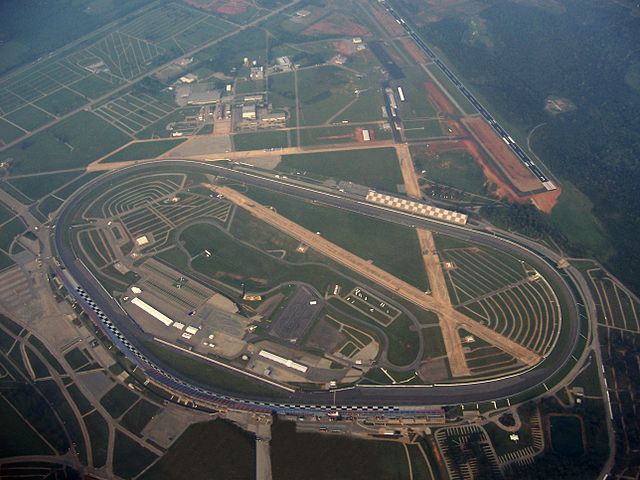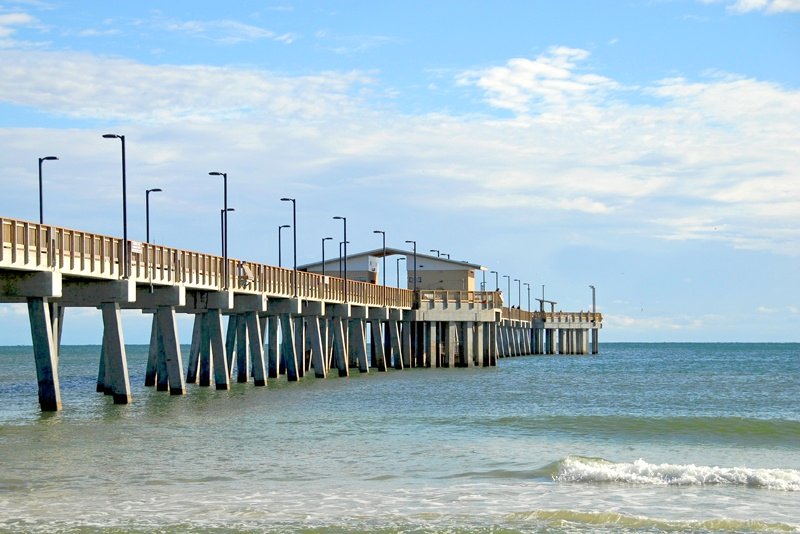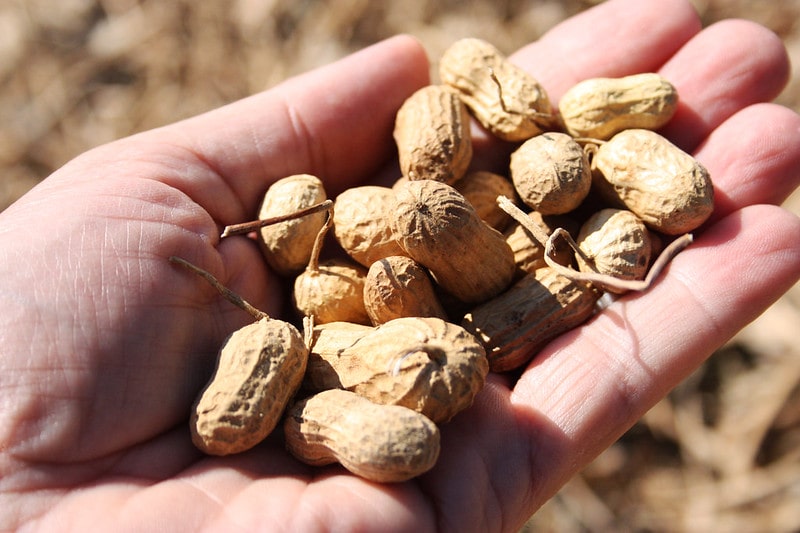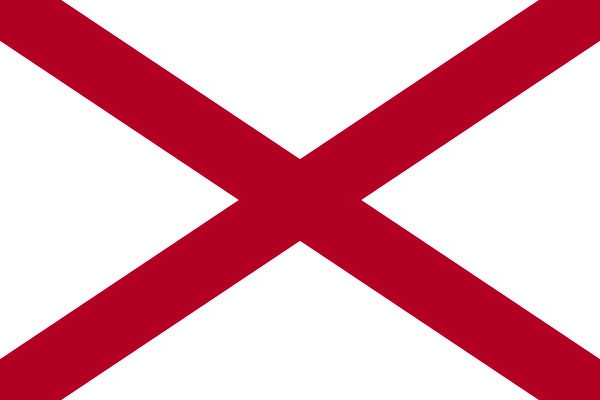Last updated on December 3rd, 2023
53. Did you know that Marie Bader, a 26-year-old from Mobile, Alabama, holds the world record for the fastest 10-kilometer run on sand? She completed the remarkable run in 55 minutes and 1 second.
54. Carl Lewis, the famous track-and-field athlete, who won nine Olympic gold medals during the 1980s and ’90s, was born in Birmingham, Alabama. He also won one Olympic silver medal, and 10 World Championships medals, including eight gold.
55. Jesse Owens is an Olympic gold medalist who was born in Oakville, Alabama. He was the son of a sharecropper and grandson of a slave. He won four gold medals at the 1936 Olympic Games in Berlin.

56. Talladega Superspeedway, formerly named Alabama International Motor Speedway (AIMS), is a motorsports complex located north of Talladega, Alabama. It is the longest NASCAR oval with a length of 2.66 mile (4.281 km).
57. Alabama is home to the oldest baseball stadium in the United States still in use: Rickwood Field in Birmingham. It opened in 1910 and has hosted many baseball legends over the years.
58. According to PEW research, Alabama is the most religious states in the US, followed by Mississippi (2nd), Tenessee (3rd), Louisiana (4th), and Arkansas (5th).
59. On December 14, 2019, Alabama celebrated its Bicentennial year (the completion of 200 years of its statehood).
60. Alabama is home to the longest known cave system in the world, the Russell Cave National Monument, which spans approximately seven miles. Russell Cave National Monument was established on May 11, 1961, by a proclamation signed by President John F. Kennedy.
61. Tuscaloosa, Alabama, is home to the historic Moundville Archaeological Park, which preserves and showcases the remains of a Mississippian Native American civilization. It was officially opened to the public in 1939.

62. Alabama is the second leading catfish producing state in the U.S., surpassed only by Mississippi.
63. The town of Guntersville, Alabama, is known as the “Cradle of Bass Fishing” and hosts numerous fishing tournaments, including the Bassmaster Classic.
64. The spiral staircase in the Alabama State Capitol was built by Horace King, who was an architect, engineer and bridge builder. He was born in slavery in South Carolina in 1807.
65. Alabama’s State Capitol building in Montgomery was the first state capitol building to be designated a National Historic Landmark.
66. The Rosenbaum House in Florence, Alabama, designed by renowned architect Frank Lloyd Wright, is the only Wright-designed structure in the state. The house was originally built in 1939 for Stanley and Mildred Rosenbaum.
67. The Coon Dog Cemetery, located in Cherokee, Alabama, is the final resting place for over 185 hunting dogs. It is a unique tribute to the bond between dogs and their owners.
68. Alabama’s Gulf Coast is known as the “Red Snapper Capital of the World” due to the abundance of red snapper fish in its waters.
69. The state of Alabama has the second-longest navigable inland waterway system in the United States, with over 1,300 miles of navigable waterways.
70. The Muscle Shoals Sound Studio in Sheffield, Alabama, attracted renowned musicians such as Aretha Franklin, the Rolling Stones, and Bob Dylan to record their music.
71. Montgomery, Alabama, is the birthplace of Nat King Cole, one of the most celebrated jazz musicians and singers ever. The legend was born as Nathaniel Adams Coles on March 17, 1919.
72. The town of Monroeville, Alabama, served as the inspiration for the fictional town of Maycomb in Harper Lee’s classic novel “To Kill a Mockingbird.”
73. The Alabama Shakespeare Festival, located in Montgomery, is one of the largest Shakespeare festivals in the world. The ASF typically offers diverse performances, including Shakespearean plays, contemporary works, and educational programs.
74. The town of Athens, Alabama, hosts the annual Athens Storytelling Festival, celebrating the art of oral storytelling. This festival is typically held in the month of October.
75. The Scott and Zelda Fitzgerald Museum in Montgomery is dedicated to preserving the legacy of F. Scott Fitzgerald, the renowned author of “The Great Gatsby,” and his wife, Zelda Fitzgerald.
76. The USS Alabama Battleship Memorial Park in Mobile is home to the USS Alabama, a World War II battleship, and the USS Drum, a submarine, both of which can be toured.
77. Oakleigh Historic Complex in Mobile is a preserved antebellum mansion that is said to be haunted. It is a popular destination for ghost enthusiasts. The house was built in 1833, making it around 190 years old as of 2023.
78. Alabama is home to the largest contiguous softwood forest in the United States, known as the Mobile-Tensaw Delta. The delta encompasses approximately 250,000 acres of rivers, streams, marshes, cypress swamps, and bottomland hardwood forests.
79. The Hidden Alabama Waterfall: Never Sink Pit, Fackler is one of the most scenic limestone sinkholes. Water cascades down a 162-feet rocky portal. Cave divers frequent the site and capture incredible pictures of the breath-taking phenomena. It is a top attraction for hikers, travelers, and adventurers.
80. Alabama’s Central Estuary: Mobile Bay serves as a historical area where fresh water from rivers mixes with marine waters that are brought by tides. Fresh water from the streams flows directly into the ocean hence mixing with salty water. There are incredible sights for history buffs, fishers, and strollers such as pelicans and freighters floating on waters.

81. The Biggest Fishing Pier in Gulf Coast: Gulf State Park offers a scenic spot for tourists who love fishing and eating fish. Stop by and rent or buy fishing equipment, baits, and licenses. The pier provides amazing experiences for any level catering to beginners and seasoned anglers. Depending on the season, you can catch various species including Spanish mackerel, king mackerel, sheepshead, flounder, cobia, red drum, etc.
82. The W.C. Handy Home and Museum: C Handy was born in 1873 in Florence in this cabin that houses today a massive collection of artifacts, memorials, and papers. Hailed as the father of blues, William Christopher Handy composed such lovely songs as “Beale Street Blues” and “St. Louis Blues.” A complete collection of his work including music, trumpet, and artifacts, is stored at the W.C. Handy Birthplace, Museum, and Library.
83. Largest Collection Of African-American Art: the University of Alabama received art worth 4.8 million dollars from Paul R. Jones as donations in 2008. The collection included over 1,700 pieces among them being the most sought-after African-American artworks. Jones brought the art after noticing the absence of fine art by African-American artists in the galleries, museums, and auctions.
84. The Urban Legend of Sloss Furnace: When Sloss Furnaces closed down, it turned into the first industrial facility in the US for public use in 1981. The US Department of the Interior named it a National Historic Landmark which now hosts metal arts programs as the interpretive museum of industry. It is also a recognized venue for festivals and concerts.
85. The World’s Biggest Motorcycle Museum: Barber Vintage Motorsports Museum in Birmingham is where get to see a bronze statue featuring 3 men riding bicycles and wearing caps. It was established by George H. Barber, a bazillionaire who was the sponsor of the odd art projects like Bamahenge and Alabama’s Lady.

86. Peanut Capital of the World: The biggest peanut festival in the United States takes place in Dothan, Ala. every fall. The city is actually hailed as the World’s Peanut Capital. The event pays homage to the agricultural heritage of Wiregrass area using whimsical sculptures around the town. People in this area demonstrate their love for peanut through a nutty artistic project that revolves around little goobers. The project comprises over 70 statues, peanut-themed and crafted by local artists. There is a popular statue names ‘The Peanut Man’ that pays tribute to Byron, a peanut peddler who used to sell boiled peanuts on the Main Street from a stand.
87. Unclaimed Baggage Center, Scottsboro: This is where the lost checked bags can be found. These include misplaced and mishandled cargos. The airlines have tremendously improved their services when it comes to the loss of luggage and handling of checked bags including electronic devices, clothes, and diamond rings. The misplaced items are returned to their owners within 2 days. Only a very small percentage remains unclaimed.
88. Auburn’s Battle Cry: Auburn War Eagle is neither a nickname nor a mascot. It carries a long history of great importance in the Auburn community. Students, fans, and alumni use the phrase ‘War Eagle’ as their unique identity no matter where they meet. The first legend of the battle cry dates back to 1892 when Auburn met Georgia on a football pitch. That day, his eagle that he had kept as a pet for 3 decades broke free and started circling the football ground. That is when Auburn steadily marched towards the end zone of Georgia and a victory ensued. Then the Auburn community shouted ‘War Eagle’ to cheer up their team. Suddenly, the bird took a dive and died after crashing on the field. It became a symbol of Auburn’s spirit.
89. Haunted Tuscaloosa Tours: There are several haunted sites in Tuscaloosa with hair-raising scenes starting from the historic Drish House. This is regarded as the most haunted dwelling place in Alabama. Together with the other 16 locations, it is associated with spine-chilling tales and dark history of Tuscaloosa. Visitors are offered guided tours on vintage bust-style coaches. The excursions may involve walking so it is advisable to wear comfortable footwear.
90. Point Mallard Park: A 750-acre Point Mallard Park in Decatur offers a golf-course, biking trails, and hiking. There is an aquatic center featuring water slides, wave pool, kiddie pools, and an Olympic-size diving pool. It also has a skating complex where skaters enjoy tear-round ice-skating.
91. Rainbow Mountain Trail, Madison: This mile and a half trail gives opportunities for runners, dog owners. And hikers to adventure into the Rainbow Mountain range. It is a moderately easy trail that can be accessed any month. Its forested areas cross creek beds, and parking lots are home to beautiful flora and fauna. The trail criss-crosses other trails like Ja Moo Koo Loop Trail and Jakes Trail. Towards the end is a historic playground around the intersection of Rainbow Mountain and Spring Trail.
About the Flag of Alabama

1. Design and Symbolism
The flag of Alabama has a diagonal crimson cross on a white field, with thick bars running from corner to corner. The X-shaped cross is also called a saltire. There are no other markings on the rectangular banner.
The law states that it is a Cross of Saint Andrew — a heraldic symbol that also appears in the flags of Scotland and the Confederate States. The name comes from Andrew the Apostle, who became a martyr after his crucifixion. According to legend, he became a patron saint after helping the Scots win a difficult battle.
2. Adoption
The Alabama legislature adopted the first state flag on February 16, 1895. Before this, a secession flag briefly flew in 1861.
3. Technical Details
The official flag has a proportion of 2:3, while the bars forming the cross must be at least six inches thick — a specification that makes compliance difficult for small flags.
The law does not stipulate an exact ratio, leading some to make square Alabama flags. In 1987, Alabama Attorney General Don Siegelman clarified that the state flag is rectangular.
4. History
In 1895, Rep. John W. A. Sanford Jr. introduced a bill to adopt a state flag. It described the design but not the meaning behind it. Speculations about the symbolism are rampant as sources point to different possibilities.
In 1915, the first director of the Department of Archives and History, Thomas M. Owen, wrote that the legislature intended to preserve features of the Confederate battle flag.
In 1924, Bell Allen Ross of the “Daughters of the Confederacy” said that Sanford based the design on his father’s battle flag for the Hilliard’s Legion regiment. A surviving copy shows a blue field with sixteen stars forming a circle and two bands forming a cross.
In 2020, the current director of Alabama archives, Steve Murray, voiced his doubts about battle flag connections due to significant design differences. He noted that the new flag could be part of the preparations for the Atlanta exposition later that year.
Others note the comparable red saltires in the flags of Alabama and Florida. If we look back at history, Southern Alabama was part of West Florida. The seal of Florida had this cross as early as 1868. It may have served as a design influence.
5. Other Flags
A variant state flag has the same crimson cross with the Alabama military crest at the bottom and the Coat of Arms on the top. It serves as the official flag of the governor.
Alabama was the 22nd state admitted to the Union in 1819. However, it declared secession in 1861 and joined the Confederacy in the Civil War. The Alabama Secession Convention designated a special flag for the movement.
At the front, you will see the goddess Liberty holding a sword and a banner with the state name. Above her are the words “Independent Now and Forever.” At the back is a rattlesnake guarding a cotton plant – a symbol of the plantations. Below are the Latin words “Noli Me Tangere” (Touch Me Not). Bad weather damaged the flag soon after.
Quick facts about Alabama and state symbols
| State Abbreviation | AL |
|---|---|
| State Capital | Montgomery List Of 50 U.S. States And Their Capital |
| State Size | Total (Land + Water): 52,419 sq miles; Land Only: 50,744 sq miles |
| Population | 5,157,699 (Estimate July 1, 2024 from United States Census Bureau) |
| Statehood | December 14, 1819 |
| State rank by population | 24th |
| State rank by date of formation | 22nd |
| State rank by area | 30th |
| Number of Counties | 67 Complete list of 50 states and number of counties in each |
| Demonym | Alabamian |
| Bordering States | Florida, Georgia, Mississippi, Tennessee |
| Official Language | English |
| Highest Point | Mount Cheaha 2,413 ft (735.5 m) |
| Lowest point | Gulf of Mexico Sea level |
| Mean elevation | 500 feet above sea level |
| Length | 330 miles (531 km) |
| Width | 190 miles (305 km) |
| Governor | Kay Ivey (R) |
| Lieutenant Governor | Will Ainsworth (R) |
| Electoral Votes | 9 |
| State Motto | Audemus jura nostra defendere (We dare defend our rights) |
| State Nickname | Yellowhammer State |
| % Water | 3.20 |
| Nobel Prize Winners | Frederick C. Robbins (Physiology or Medicine, 1954) |
| Famous People | Channing Tatum (Actor) Nat King Cole (Singer) Mark Childress(American Novelist) |
| State Horse | Racking horse |
| State Bird | Yellowhammer |
| State Crustacean | Brown shrimp |
| State Amphibian | Red hills salamander |
| State Flower | Camellia |
| State Fossil | Basilosaurus Cetoides |
| State Gemstone | Star blue quartz |
| State Mammal | Black bear |
| State Nut | Pecan |
| State Tree | Longleaf pine |
| State Fresh Water Fish | Largemouth bass |
| State Insect | Monarch butterfly |
| State Fruit | Blackberry |
| State Reptile | Alabama red-bellied turtle |
| State Rock | Marble |
| State Salt Water Fish | (Fighting) tarpon |
| State Shell | Scaphella junonia johnstoneae |
| State Soil | Bama soil series |
| State Wildflower | Oak-leaf hydrangea |
| State Tree Fruit | Peach |
| Longitude | 84° 53′ W to 88° 28′ W |
| Latitude | 30° 11′ N to 35° N |
| Time Zone | Central Time Zone |
| Website | alabama.gov |
| Area Codes | 205, 251, 256, 334, 659, 938 |
| Table last updated | May 10, 2025 |
